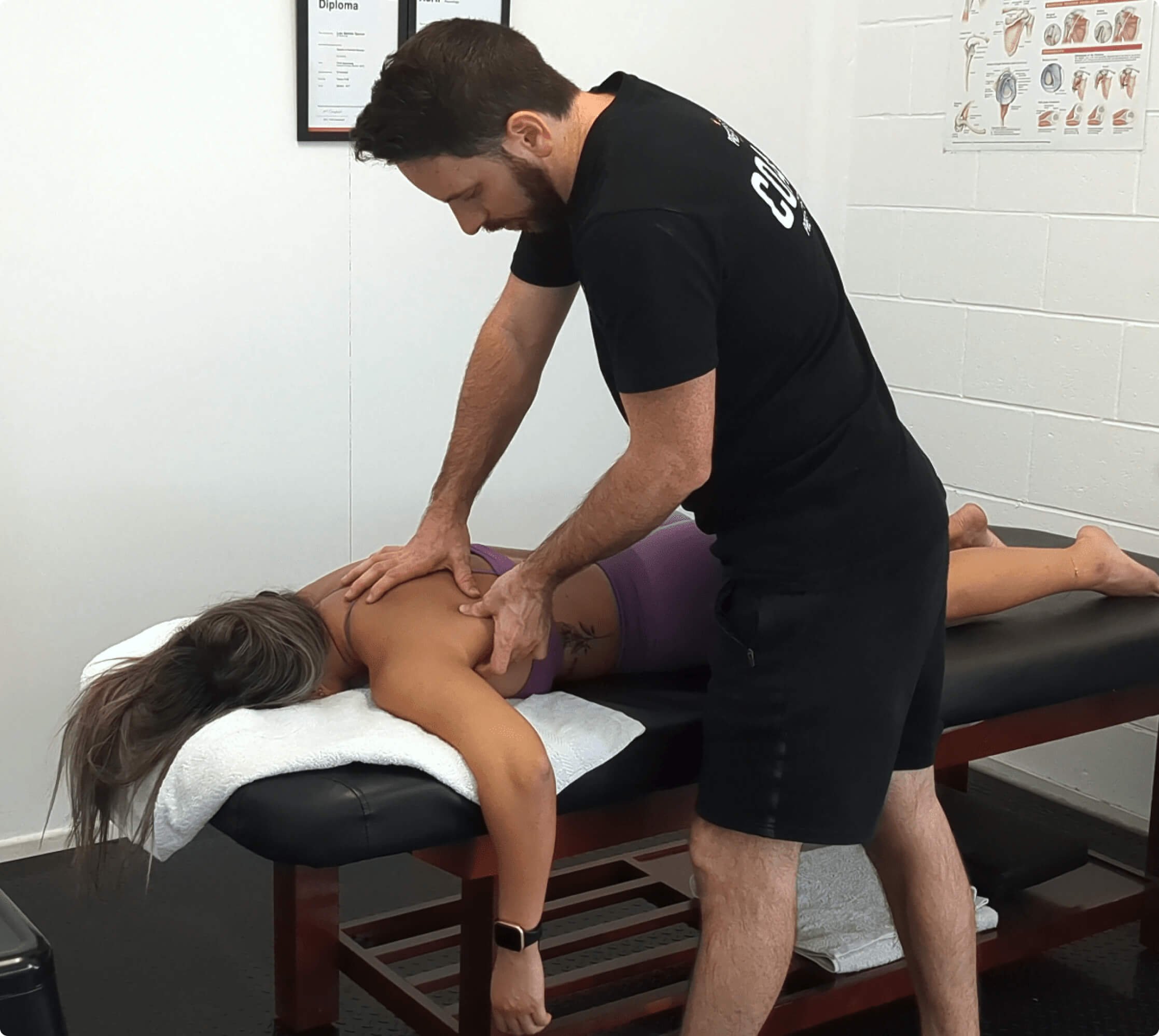
Treatments
Bellow is more detailed description of the various techniques and skills I use when I treat my clients. When ever you come to see me I may use any combination of these tools to get the results you want. (Click the name of each treatment to read more).
-
Massage comes in many forms, this is a good and a bad thing. The good part is that massage can be used to treat a vary wide variety issues.
The bad part is that this also means you don't always know what you are signing up for when getting a massage. So, let me explain wat you can expect when you come to see me for Remedial Massage Therapy.
Professional vs Standard
Not commonly known is that Remedial Massage therapists are trained in a lot of the same skills, techniques and knowledge that physiotherapist are.
When you see a professional therapist like myself we don't just throw you on the table and rub you for an hour (there is nothing wrong with that either), we will first spend a moment assessing you and asking questions about your current issues, so we can we can figure out how to efficiently and effectively resolve your problem.
How Does It work
Whilst Remedial Massage works directly with the muscles, what we are actually effecting is the Nervous system.
It is this change in the nervous system that results in the reduced tension and pain often attributed to massage treatment.
-
A very powerful and accurate treatment, Dry Needling can treat even the most severely tight and painfully muscles.
Often used to help with sports injuries and common chronic pain symptoms, Dry Needling is a great additional tool to use alongside massage and exercises.
Is it like acupuncture?
Whilst they both use Needles, Dry Needling and Acupuncture very different in their approach.
Acupuncture works with the premise that the body has certain channels, called meridian lines, that move energy and information through the body too the brain and other organs.
Needles are used to affect these lines and bring function back to the system. Dry Needling on the other hand simply targets tight painful muscles.
How Does It Work
When a Needle is placed into a muscle we often see a twitch or short contraction and then a relaxation of the muscle.
This very quick response results in a chemical change in the tissue often resulting in reduction of pain and improvement in range of motion.
Electro Needling
As well as the benefits of dry needling, electro needling introduces a light pulsing current through the needles. The addition of the current can significantly help to treat inflammation and pain in the area, often with immediate results.
-
You may have seen athletes sporting (see what I did there?) circular bruises on their bodies. These are from cupping, which is a form of therapy that suctions a section of skin and muscle tissue to improve blood and lymphatic flow to the area.
Often, pain is the result of poorly oxygenated and acidic tissue that is not healing and recovering, this is where therapies like cupping can help.
-
Vagus nerve stimulation (VNS) is a therapeutic technique that involves delivering electrical impulses to the vagus nerve, which is a major nerve in the body that plays a crucial role in regulating various bodily functions, including heart rate, digestion, and mood.
VNS has been approved by regulatory agencies for the treatment of certain medical conditions, such as epilepsy and depression. In epilepsy, VNS may help reduce the frequency and severity of seizures by modulating the electrical activity in the brain. In depression, VNS may be used as a treatment option for individuals who have not responded well to traditional antidepressant medications.
Additionally, research suggests that VNS may have potential benefits for other conditions, including anxiety disorders, migraines, pain and inflammatory diseases, although further studies are needed to fully understand its effectiveness for these purposes.
Overall, VNS offers a promising avenue for the treatment of various medical conditions by harnessing the body's natural nervous system pathways to promote therapeutic effects.
-
Radial shockwave therapy (RSWT) is a non-invasive treatment method used to treat musculoskeletal conditions, such as tendonitis, plantar fasciitis, and calcific shoulder tendinopathy. The therapy uses high-energy sound waves that are delivered to the area of pain or injury.
Here's how it works:
Shockwave Generation: A special device generates high-energy acoustic waves (also known as shockwaves) and directs them toward the affected area. The shockwaves are created by an electromagnetic coil or a piezoelectric crystal, which produces energy in the form of rapid pressure waves.
Wave Propagation: The shockwaves travel through the skin and tissue to reach the targeted area, where the injury or pain is localized. These waves are typically "radial," meaning they spread out from the source point in a circular fashion. This is in contrast to focused shockwaves, which are concentrated in one spot.
Biological Effect:
Tissue Stimulation: The shockwaves stimulate the body’s natural healing process. They promote the production of collagen, improve blood circulation, and can help in the removal of metabolic waste products.
Pain Reduction: Shockwaves can interrupt pain signals by stimulating nerve endings, which may result in a reduction of pain.
Calcification Breakdown: In cases where calcium deposits (like those in tendon calcification) are present, the shockwaves may help break them down.
Cell Regeneration: The therapy encourages the formation of new blood vessels, enhances cellular repair, and speeds up the tissue healing process.
Radial shockwave therapy is often used for chronic pain that hasn't responded well to other forms of treatment. It is very safe, though it can cause some discomfort during the procedure.
-
At the heart of most pain and dysfunction is a history of poorly executed excise or lack there of. All too often I hear the story of the late 30's to 40 something individual who has let themselves go for too long and then decides to try and get fit and hit the gym, only to end up on my table with shoulder, back or knee pain.
What I offer in my personal training and movement coaching is not the "drop down and give me 20" approach that carelessly pushes people to injury, but one that teaches you the skills of how to move and exercise well.
Train with me if you want:
Quality and professional coaching
To get out of pain
Feel mentally and physically stronger
Sort your body out for good





